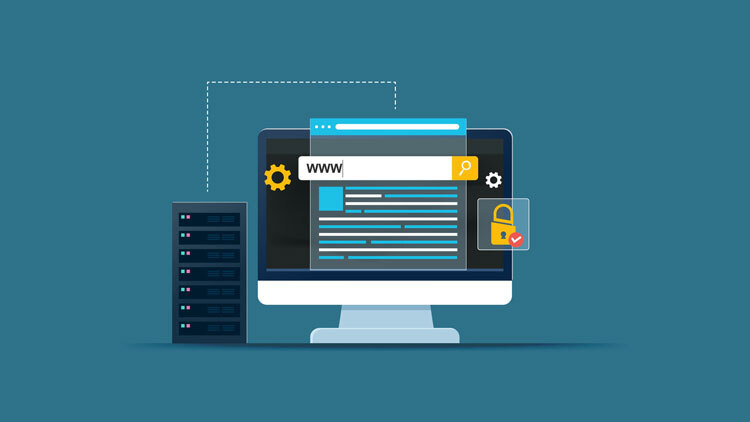Speed, Security, Scale: The New Pillars of Modern Website Development
Your website is more than a marketing asset—it’s a mission-critical platform that influences customer perception, supports revenue generation, and drives operational efficiency. But as user expectations and technology standards evolve, simply having a “nice” website is no longer enough.
Today, three pillars define the success of any website: Speed, Security, and Scale. These aren’t technical afterthoughts; they’re foundational priorities that impact everything from SEO and user engagement to trust and long-term growth.
This article explores why modern businesses must rethink website development around these three strategic pillars—and how aligning them with your business goals can unlock measurable results.
Why Website Speed Directly Impacts User Retention and SEO
Users today are impatient, and search engines are unforgiving. In an age of near-instant gratification, speed isn’t a luxury—it’s an expectation. Website performance is directly tied to user retention, conversion rates, and search engine rankings.
- The Speed-Conversion Correlation
According to Google, the probability of a bounce increases by 32% as page load time increases from 1 to 3 seconds. Every additional second it takes for your website to load causes potential customers to abandon your site—and your business.
Consider these findings:
- A 1-second delay in page response can result in a 7% reduction in conversions.
- 53% of mobile users leave a site if it takes longer than 3 seconds to load.
- For ecommerce brands, speed directly influences revenue: slow checkout pages often lead to cart abandonment.
In short, faster sites sell more, engage more, and retain more users.
- Search Engines Reward Speed
Google has made it clear: page speed is a ranking factor. With the introduction of Core Web Vitals, site performance is now officially a component of your SEO score. These metrics include:
- Largest Contentful Paint (LCP): how fast the main content loads
- First Input Delay (FID): how quickly a site becomes interactive
- Cumulative Layout Shift (CLS): how stable the layout is while loading
Websites that score poorly on these metrics risk lower visibility in search results—no matter how good the content is.
- How to Build for Speed
Speed optimization starts at the development stage, not after launch. Strategic developers implement:
- Lightweight, clean code
- Optimized image and media formats (e.g., WebP, lazy loading)
- Content Delivery Networks (CDNs) for faster global access
- Efficient caching and minimized server requests
When speed is a pillar, not an afterthought, users stay longer, search engines rank higher, and businesses convert better.
Security-First Development: Building Trust with Every Click
Your website is a digital front door—and no one trusts a front door that looks unlocked. In today’s privacy-conscious environment, users expect their data to be safe, and regulators demand it. A secure website isn’t just about protecting code—it’s about preserving reputation, trust, and compliance.
- Trust is Earned Through Security
Think about the red “Not Secure” warning in browsers—it instantly creates hesitation, no matter how good the content or product. That perception gap can cost you customers.
Security-first development includes:
- SSL certificates (HTTPS)
- Encrypted data transmission
- Secure authentication and session management
- Regular patching and software updates
A single breach, downtime, or data leak can undo years of brand-building. Proactive development helps avoid these risks.
- Compliance is No Longer Optional
Depending on your industry and location, your website may be subject to data protection laws like:
- GDPR (Europe)
- CCPA (California)
- PCI DSS (for ecommerce)
Failing to comply can result in fines, lawsuits, and public scrutiny. A security-first developer will build in consent tools, encrypted storage, and permission-based access from the outset—not tack it on later.
- Secure Coding is Smart Business
Many vulnerabilities—like SQL injection or cross-site scripting (XSS)—are preventable with best practices in secure coding. Strategic development teams:
- Use frameworks that auto-sanitize inputs
- Implement role-based access controls (RBAC)
- Conduct code reviews and automated security scans
- Harden APIs and third-party integrations
Security isn’t about fear—it’s about confidence. And confidence turns visitors into customers.
Scaling Made Simple: How Smart Architecture Supports Growth
A website that can’t handle growth becomes a bottleneck. Whether it’s expanding your product catalog, adding new features, or handling higher traffic, scalability is what determines whether your digital platform keeps up or holds you back.
- Growth Shouldn’t Mean Downtime
A non-scalable website might work fine with 100 users—but start breaking under 1,000. Strategic development avoids this with flexible architecture that scales horizontally and vertically:
- Horizontal scaling adds more servers or resources
- Vertical scaling enhances performance on a single server
The goal: accommodate growth without interrupting service, redesigning infrastructure, or burning through budget.
- Modular Frameworks = Future Flexibility
Smart development uses modular frameworks that allow for easy updates, feature additions, and design iterations. Whether you’re a startup launching version 1 or an enterprise managing multiple microsites, modularity keeps your codebase clean and adaptable.
Tools like:
- Component-based front-end frameworks (React, Vue)
- Headless CMS setups
- API-first architecture
…enable businesses to evolve their website incrementally, not rebuild it from scratch.
- Cloud and DevOps for Seamless Scale
Scalable websites are often hosted on cloud platforms like AWS, Google Cloud, or Azure. These platforms provide:
- Auto-scaling infrastructure
- Load balancing across servers
- Backup and recovery systems
- CI/CD pipelines for faster deployment
With the right DevOps setup, new features, patches, and performance improvements can be deployed without downtime, enabling continuous growth without technical debt.




 +91 8277203000
+91 8277203000
